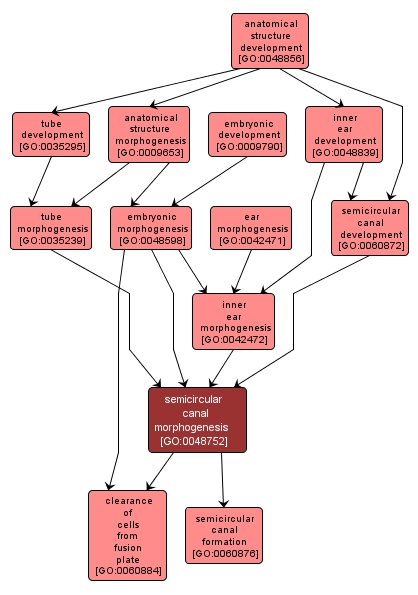GO TERM SUMMARY
|
| Name: |
semicircular canal morphogenesis |
| Acc: |
GO:0048752 |
| Aspect: |
Biological Process |
| Desc: |
The process by which the anatomical structures of the semicircular canals are generated and organized. Morphogenesis pertains to the creation of form. |
Synonyms:
- embryonic semicircular canal morphogenesis
|
|

|
INTERACTIVE GO GRAPH
|














